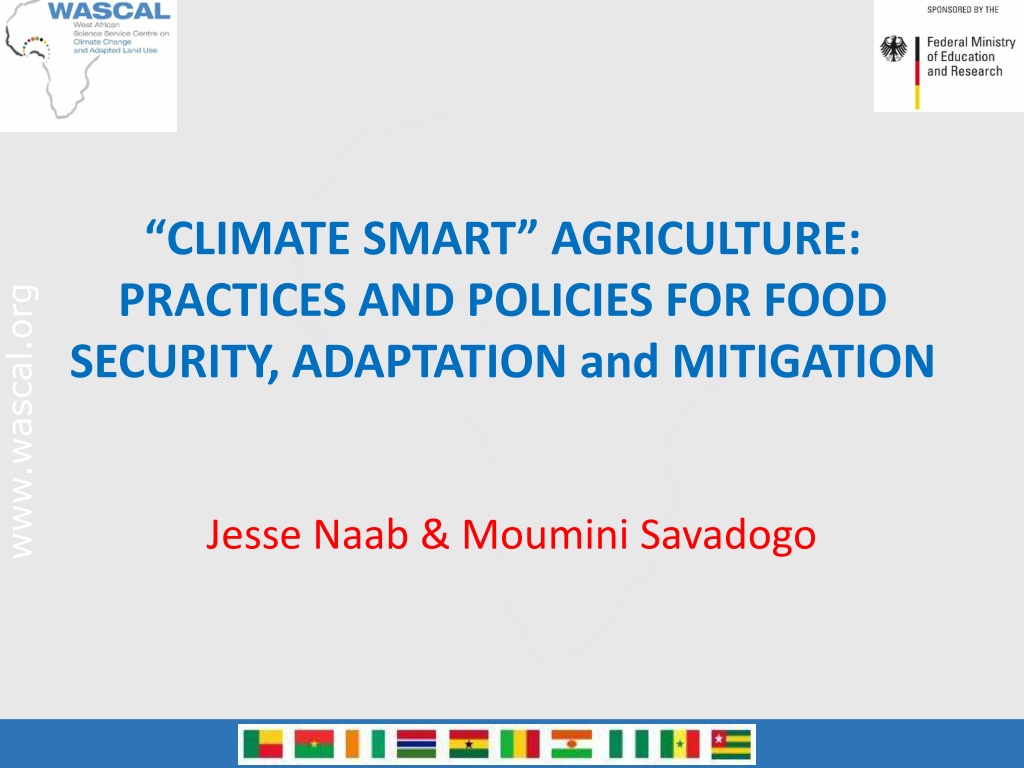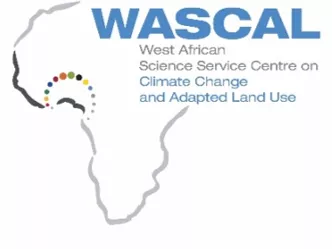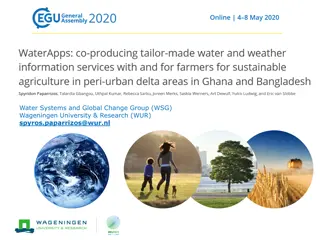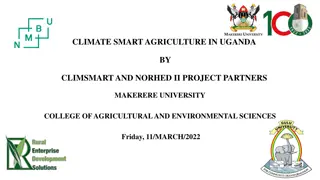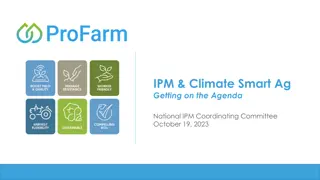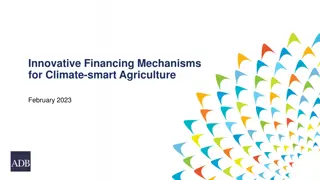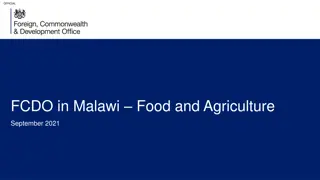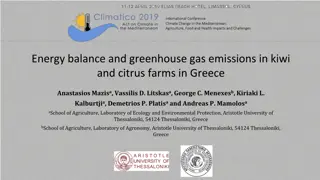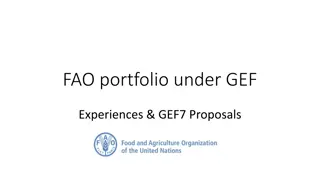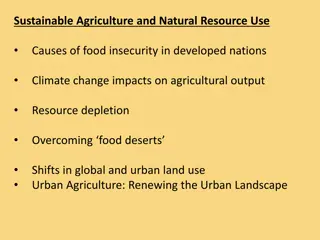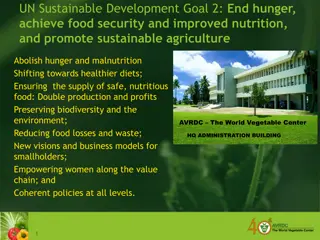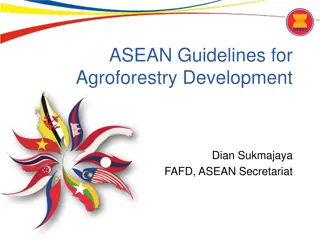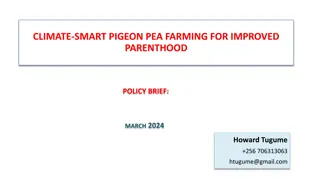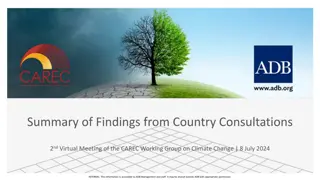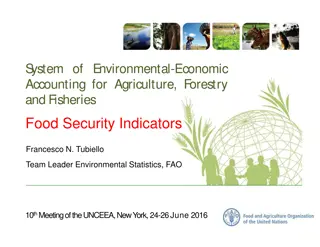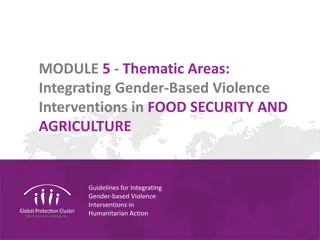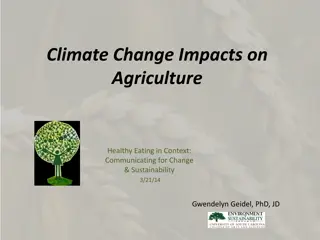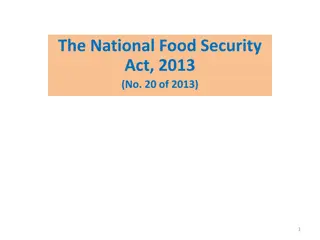Climate Smart Agriculture: Practices and Policies for Food Security
Agriculture has become more efficient due to modern technologies, but still faces challenges like changing food consumption patterns, competition for resources, land degradation, and climate change. Ghana's population growth and climate challenges require a shift towards climate-smart agricultural systems to ensure food security and adaptation to changing conditions.
Download Presentation

Please find below an Image/Link to download the presentation.
The content on the website is provided AS IS for your information and personal use only. It may not be sold, licensed, or shared on other websites without obtaining consent from the author. Download presentation by click this link. If you encounter any issues during the download, it is possible that the publisher has removed the file from their server.
E N D
Presentation Transcript
CLIMATE SMART AGRICULTURE: PRACTICES AND POLICIES FOR FOOD SECURITY, ADAPTATION and MITIGATION www.wascal.org Jesse Naab & Moumini Savadogo www.wascal.org
INTRODUCTION Agriculture more efficient in the past decades Modern technologies & advances in science have considerably increased food production Agriculture still faces stiff challenges: - Ghana s population projected to grow from the current 25.5 m to more than 51.3 m by 2050; www.wascal.org www.wascal.org
Current challenges to agriculture Food consumption patterns are changing Increasing competition for land, water, energy and other inputs for production Land degradation Climate change poses additional challenges to agriculture particularly in developing countries www.wascal.org www.wascal.org
Climate Change as Additional Challenge Long term changes in temperature and precipitation expected to shift production seasons, pest and disease patterns & modify the set of feasible crops www.wascal.org www.wascal.org
Climate scenarios in Ghana Precipitation changes: little changes in annual precipitation in most regions of the country; CSIRO Mark 3 predicts possibilities of general reduction in pptn across the country Average daily Tmax: all show an increase in temperature ranging from 1.5 C to 2.5 C Increased climate variability in the coming decades will increase the frequency and severity of droughts and floods and increase production risk www.wascal.org www.wascal.org
Preserving and enhancing food security requires agricultural production systems to change in the direction of higher productivity and more resilient Purpose of this paper is to highlight that food security and climate change are closely linked Key opportunities exist to transform the sector towards climate smart systems that address both www.wascal.org www.wascal.org
Climate Smart Agriculture vrs. Sustainable Intensification of Agriculture Sustainable intensification (SI) and Climate Smart Agriculture (CSA) are highly complementary The SI approach entails increasing food production from existing farmland in ways that have lower environmental impacts Food demand needs to be met from existing agricultural land www.wascal.org www.wascal.org
Climate Smart Agriculture (CSA) CSA defined by three objectives: - Increasing agricultural productivity to support increased incomes, food security & development; - Increasing adaptive capacity at multiple levels (from farm to nation); - Decreasing GHG emissions and increasing carbon sinks www.wascal.org www.wascal.org
Examples: Climate Smart Practices Production achieved through a number of production systems ranging from smallholder to large scale production. The sustainable intensification of production can ensure food security and contribute to mitigating climate change. Overall efficiency, resilience, adaptive capacity and mitigation potential of the production systems can be enhanced through improving its various components: www.wascal.org www.wascal.org
Examples: Climate Smart Practices Improving soil nutrient content: - Composting manure & crop residues - Using legumes in rotations of intercropping - Controlled release & deep placement technologies - Using methods & practices that increase organic inputs Water harvesting and use: ridges, zai pits, stone bunds, irrigation dams fundamental for increasing productivity and addressing climate variability Pest & disease control www.wascal.org www.wascal.org
Examples: Climate Smart Practices Resilient ecosystems: Improving ecosystem management & biodiversity Genetic resources Determines tolerance to shocks e.g. temp, drought, flood. Preservation of genetic resources of crops & breeds & wild relatives fundamental. Conservation Agriculture Agroforestry www.wascal.org www.wascal.org
Urban and Peri-Urban Agriculture - 50% Ghana s population lives in the cities & expected to rise to 70% by 2050 - Urban and Peri-Urban agriculture is providing significant quantities of food and improving food security; - Vegetables, fruits, mushrooms, meat, eggs, are being produced in home gardens and along streams - Key constraints and issues need to be addressed to realize the full potential of urban & peri-urban agriculture www.wascal.org www.wascal.org
Climate Smart Livestock Production Largest user of land resources; grazing land 26% Cause of overgrazing and land degradation and driver of deforestation Responsible for methane and nitrous oxide emissions Significant productivity improvements needed to meet food security requirements while minimizing GHG emissions from production www.wascal.org www.wascal.org
Climate Smart Livestock Production Application of science & advance technology in feeding & nutrition, genetics Improved forecasting of risks, determination of effects of climate change Efficient treatment of manure e.g. anaerobic digestion & composting solid manures can lower GHG emissions Grazing land management www.wascal.org www.wascal.org
INSTITUTIONAL AND POLICY OPTIONS Enabling policy environment NAPAs, NAMAs, CAADP Climate data & information gaps Dissemination mechanisms Building the capacity of institutions to improve access, coordination and collective action Institutions to support financing & insurance needs credit, insurance, social safety nets www.wascal.org www.wascal.org
THE ROLE OF WASCAL AS A CLIMATE SERVICE INSTITUTION VISION: To become one of Africa s leading institutions in the provision of climate services to protect and enhance livelihoods in and for West Africa MISSION To provide information, knowledge products and research-based services at the local, national, and regional levels to help cope with the adverse impacts of climate change. www.wascal.org www.wascal.org
Objectives of WASCAL Significantly improve the climate infrastructure in West Africa. Explore science-based scenarios and options for enhancing the resilience of socio-ecological systems Assist policy and decision makers to design and implement land use patterns that ensure the provision of essential ecosystem services while supporting the livelihoods of local communities. Help capacitate the next generation of scientists and policy makers by providing intimate knowledge of climate-related issues www.wascal.org www.wascal.org
THE ROLE OF WASCAL AS A CLIMATE SERVICE INSTITUTION Initial geographic target area is the Guinea Savanna agroecological zone Established transnational observation networks shared with national & regional stakeholders Formulated a research program to be jointly implemented by regional research consortia www.wascal.org www.wascal.org
THE ROLE OF WASCAL AS A CLIMATE SERVICE INSTITUTION The research program will focus on 4 thematic areas: - Land use, land cover, land degradation & climate change - Risks and Vulnerability to Climate Extremes - Sustainable Urban-Rural & Cross-border Migration - Sustainable Agriculture-Climate Smart Nexus www.wascal.org www.wascal.org
KEY MESSAGES Agriculture must undergo a significant transformation in order to meet the related challenges of food security & climate change Effective climate smart practices already exist and could be implemented Institutional and financial support will be required to enable smallholders make the transition to CSA www.wascal.org www.wascal.org
Strengthened institutional capacity will be needed to improve dissemination of climate smart information and coordinate over large areas and numbers of farmers Greater consistency between agriculture, food security and climate change policy-making must be achieved at national, regional and international levels www.wascal.org www.wascal.org
